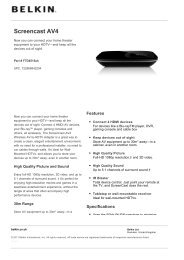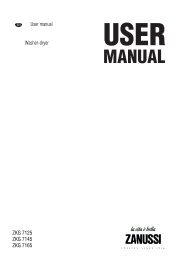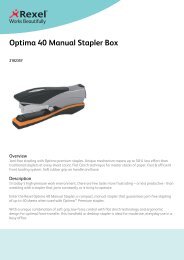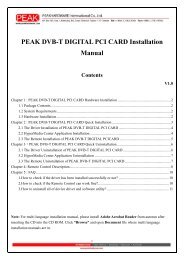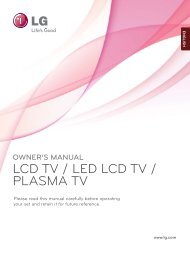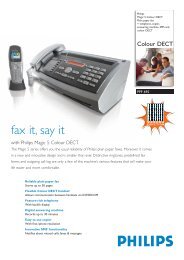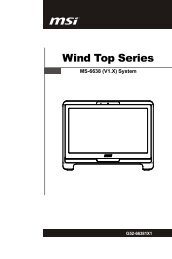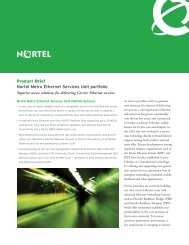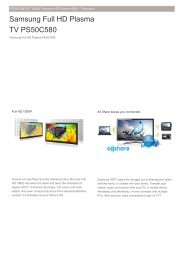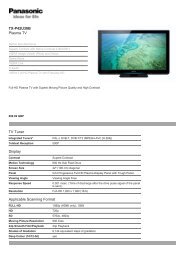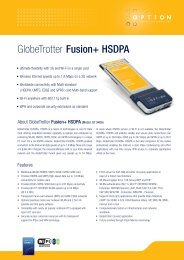HP Storage Essentials Storage Resource Management Software Suite
HP Storage Essentials Storage Resource Management Software Suite
HP Storage Essentials Storage Resource Management Software Suite
Create successful ePaper yourself
Turn your PDF publications into a flip-book with our unique Google optimized e-Paper software.
QuickSpecs<br />
Product Highlights<br />
<strong>Storage</strong> <strong>Essentials</strong> SRM License to use (LTU) Definitions:<br />
"MAP" means a managed access port<br />
"MAL" means a managed application license specific to a software application such as used for Microsoft Exchange Server<br />
Viewer and Database Viewer (Oracle database, DB2, Informix, Sybase, Microsoft SQL and InterSystems Cache')<br />
"TB" means terabytes which designates the amount of physical capacity that can be managed<br />
"Concurrent User" or "CC User" means the <strong>Software</strong> is licensed by the amount of users that simultaneously use the <strong>Software</strong> at<br />
any one point in time. The <strong>Software</strong> can be installed on any number of computers, provided that the actual usage of the<br />
<strong>Software</strong> does not exceed the number of licenses purchased.<br />
"Array" means a collection of data items that are given a single name and distinguished by numbers<br />
<strong>HP</strong> <strong>Storage</strong> <strong>Essentials</strong> SRM Enterprise Edition software/<strong>HP</strong> <strong>Storage</strong> <strong>Essentials</strong> SRM Provisioning Manager software/<strong>HP</strong><br />
<strong>Essentials</strong> SRM Chargeback Manager software<br />
These products are licensed by MAP. The following details how to determine the number of MAP licenses required:<br />
Interconnect devices: For a fully populated switch (i.e., all blades are installed and all ports in all blades have GBIC/SFPs<br />
installed), all ports are counted towards MAPs total. If no interconnect devices add up the number of GBIC/SFPs installed in the<br />
FC switch and that is the MAPs total.<br />
Hosts and Infrastructure:<br />
A non-<strong>Storage</strong> Area Network (SAN) attached server (no HBA) that has the agent installed/discovered will count as 1 MAP<br />
A SAN attached server that has the agent installed/discovered will count each Fibre Channel (FC) port as a MAP (a dual<br />
ported HBA will count as 2 MAPs)<br />
A Fibre Channel switch with 64 Fibre channel active ports counts as 64 MAPs<br />
IDE or SCSI ports are not counted in MAP calculations unless they are used to connect to fabric switches or storage systems<br />
A Windows server with no CIM Extension installed, but that has been discovered via WMI will count as 1 MAP<br />
For NPIV only the physical ports are counted. For example, a customer has 10 <strong>HP</strong> BladeSystem c-Class blades with one Host<br />
Buss Adapter (HBA) each dual ported and connected to a Brocade NPIV port will count as 12 MAPs (10*2+1).<br />
In the hosted virtual environment, ESX server HBA ports are counted as MAPs. For example, 5 ESX servers with 2 dual ported<br />
HBAs counts as 10 MAPs (5*2=10)<br />
Each Vmware Virtual Server discovered with <strong>HP</strong> <strong>Storage</strong> <strong>Essentials</strong> will count towards one MAP. Vmware hypervisors (for<br />
example VMware ESX servers) will be treated as physical servers<br />
<strong>Storage</strong> subsystems:<br />
All discovered storage array controller ports count (for example SMI-S is used to find the arrays). If the array has 8 ports, it will<br />
count 8 MAPs. The number of MAPs in a storage system includes all physical connections independent of protocol (including<br />
Fibre Channel, ESCON, SCSI and/or FICON, Ethernet, or Gigabyte Ethernet).<br />
<strong>HP</strong> <strong>Storage</strong> <strong>Essentials</strong> SRM Exchange Viewer software/<strong>HP</strong> <strong>Storage</strong> <strong>Essentials</strong> SRM Database Viewer software<br />
These products are licensed by MAL. The following details how to determine the number of MAL licenses required:<br />
Standalone Applications:<br />
Exchange, Sybase, Oracle, DB2, Informix,Cache Intersystems, MS SQL - 1 MAL per application instance<br />
1 Exchange Application instance = An Exchange Server that hosts many mailboxes<br />
1 Oracle Application instance = 1 Oracle Instance (SID) serving an Oracle database<br />
1 MSSQL Application Instance - 1 MSSQL Instance which may contain many MSSQL database underneath<br />
1 DB2 Application instance =<br />
1 Informix Application Instance =<br />
Clustered Applications:<br />
<strong>HP</strong> <strong>Storage</strong> <strong>Essentials</strong> <strong>Storage</strong> <strong>Resource</strong><br />
<strong>Management</strong> <strong>Software</strong> <strong>Suite</strong><br />
DA - 12191 Europe, Middle East and Africa QuickSpecs — Version 25 — 12.1.2009 Page 8



